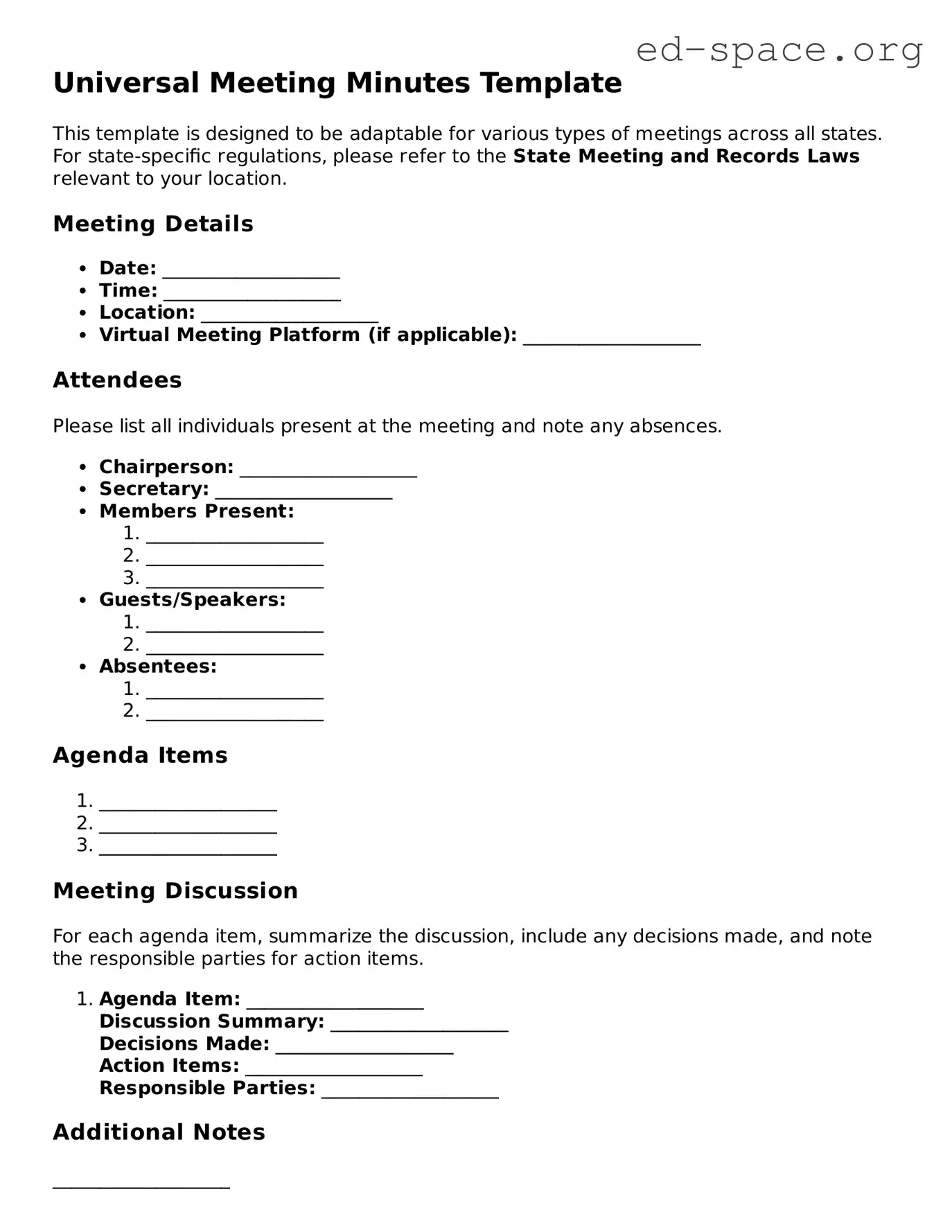What are Meeting Minutes?
Meeting minutes are a written record of what was discussed and decided in a meeting. They capture the essence of the meeting by detailing the attendees, key points discussed, decisions made, and actions that need to be taken, along with deadlines.
Why are Meeting Minutes important?
Meeting minutes serve several crucial functions. They act as a reference document, help in tracking progress, ensure accountability, and are a legal record of the proceedings and decisions made. This is particularly important in the case of boards or committees where decisions have a significant impact.
Who should take Meeting Minutes?
Typically, a designated person such as a secretary, administrative assistant, or a member of the team will take the minutes. The person responsible should have good listening and summarizing skills to accurately reflect what was discussed and decided.
What should be included in Meeting Minutes?
Effective meeting minutes should include the date and time of the meeting, list of attendees, key points discussed, decisions made, actions that need to be taken including the responsible persons, deadlines for action items, and the time the meeting adjourned.
Are there legal requirements for Meeting Minutes?
Yes, for certain types of meetings, especially those involving boards of directors or shareholders, there are legal requirements. These requirements vary by jurisdiction but generally include keeping accurate records of the decisions made and actions taken. Failure to do so can have legal consequences.
How formal should Meeting Minutes be?
While meeting minutes need to be accurate and comprehensive, the level of formality can vary depending on the group's needs. Some organizations prefer a structured and formal approach, while others may opt for a more informal style as long as all critical information is captured.
Can Meeting Minutes be edited after the meeting?
While minor edits for clarity and grammar can be made, substantive changes to meeting minutes after they have been finalized and approved can raise issues of integrity and accuracy. Generally, any significant changes should be made during the meeting or must be approved by the attendees or a supervising entity.
How should Meeting Minutes be stored and distributed?
Meeting minutes should be stored securely, in a format and location accessible to those who are authorized. Digital storage is common, allowing for easy distribution via email or a shared drive. The method of distribution should ensure privacy and security, especially for sensitive information.
What is the best way to format Meeting Minutes?
There's no one-size-fits-all format for meeting minutes, but a good practice is to follow a structured outline that covers all necessary sections: attendees, agenda items, discussion points, decisions, action items, and deadlines. Using a template can help maintain consistency across meetings.
Are Meeting Minutes public information?
This depends on the nature of the meeting and the organization. Meetings of public bodies are often subject to open meeting laws, requiring minutes to be accessible to the public. In contrast, private organizations may keep minutes confidential, accessible only to members or stakeholders.
